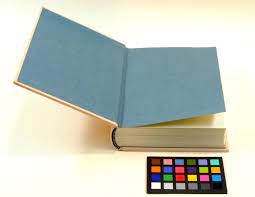
Book binding methods shape every reader’s experience
The content of a book may spark the imagination, but it’s the physical form that guides how we interact with it. Book binding methods shape every reader’s experience by affecting how a book feels, opens, endures, and appeals to the senses. Whether it’s a lightweight paperback or a richly bound hardcover, the binding is the foundation that supports both form and function.

The First Impression Begins With Binding
Before the first word is read, the binding makes an impression. A sleek, perfect-bound novel looks modern and compact, while a case-bound book with a cloth or leather spine instantly conveys tradition and durability. The moment a reader picks up a book, its binding communicates tone, quality, and purpose.
This initial interaction is important. A book with a poorly chosen or weak binding can feel flimsy or awkward in hand, discouraging deeper engagement. On the other hand, a thoughtfully bound book encourages exploration, suggesting that care was taken not just in writing, but in presentation. In this way, book binding methods shape every reader’s experience from the first touch.
Comfort and Usability Matter
Different binding methods offer varying levels of comfort and ease of use. For example, spiral binding or lay-flat binding allows cookbooks and manuals to stay open on a counter or workbench—ideal for hands-free reading. Meanwhile, sewn case bindings open wide without damaging the spine, making them perfect for academic and literary works that invite annotation and study.
Perfect binding, common in paperback books, is lightweight and portable but may not stand up to heavy use. Saddle stitching works well for booklets and magazines but isn’t suited for thick publications. Each choice impacts how readers engage with the text, confirming that book binding methods shape every reader’s experience in practical, tactile ways.
Durability Influences Longevity
A book’s life expectancy is closely tied to how it’s bound. High-quality bindings ensure that a beloved novel or frequently referenced textbook holds together through repeated use. Thread-sewn or case-bound books typically last much longer than glue-only bindings, which may crack over time.
When readers invest in books—emotionally or financially—they expect them to endure. A well-bound book resists wear and becomes a trusted companion for years. This longevity fosters deeper attachment to the story or information inside. Thus, book binding methods shape every reader’s experience not only during the first read, but throughout the book’s entire lifespan.
Visual and Emotional Appeal
Binding is also an art form, enhancing the book’s emotional and aesthetic appeal. Decorative stitching, embossed covers, colored headbands, or custom materials like linen or leather can elevate a book from a basic object to a cherished keepsake.
Special editions and gift books often use deluxe bindings to create a sense of occasion. These tactile and visual enhancements make the reading experience feel more personal, immersive, and memorable. Clearly, book binding methods shape every reader’s experience by influencing not just how we read—but how we feel while reading.
Choosing the Right Binding for the Right Reader
Publishers, authors, and designers must consider the target audience when selecting a binding method. Is the book meant for casual reading or frequent reference? Should it be compact and travel-friendly or substantial and collectible?
A children’s picture book might benefit from board binding for durability and safety. A field guide could use spiral binding for easy access in the outdoors. Meanwhile, a coffee table photography book might require case binding with a fabric cover for maximum visual impact.
Every decision affects how the book will be used and remembered. That’s why book binding methods shape every reader’s experience, transforming how stories are delivered, explored, and treasured.





